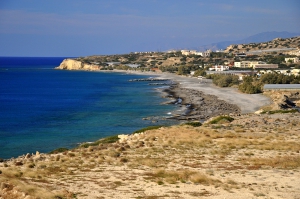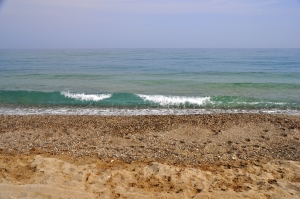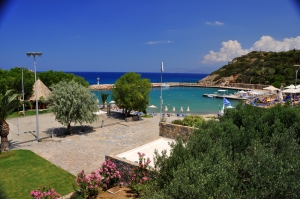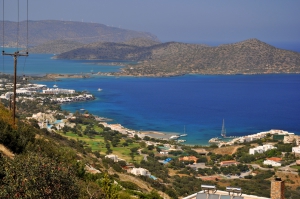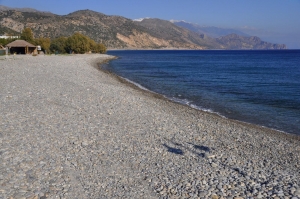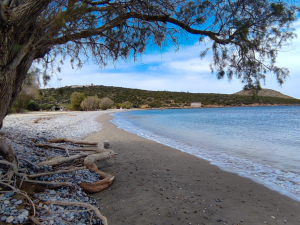Shortly after the suburb Peristeras of Ierapetra starts the area of Katharades. This is a series of small beaches just before the famous shores of the village Koutsounari. This is a rugged place with strong winds, ranked among the 2-3 places with strongest wind blasts on Crete.
Misiria get their name from the Arabic word Misr, which is a suburb of Cairo with very fertile soil. Similarly, the region is named Misiria because of the fertile land, which still produces many vegetables.
2km north of Agios Nikolaos you will meet the historic Hotel Mirabello. In front of the hotel there are the two bays of Mirabello with two beautiful sandy beaches. The first beach is protected by docks and a small marina. Both of them are very well-organized, with umbrellas, sunbeds, showers and bar. They are separated by a short artificial peninsula with tamarisk trees.
The first beaches of Elounda that you meet after Lenika, as you come from Agios Nikolaos, are the beaches in front of the famous hotels of Elounda at position Pigaidakia. Every hotel that respects itself here has its own harbor, where yachts can stop. Next to the piers there are small sandy beaches which offer all kinds of opulence and luxury services.
Votsala or Halikia are located after the west end of Paleochora harbor, 79km south of Chania city, next to the exit of Kakodiakianos River, and extend for about 1km to the east. Halikia and Pahia Ammos are the two main beaches in Paleohora town. Halikia has round pebbles and is well organized and preferred mainly by Greeks than the sandy beach of Pahia Ammos











